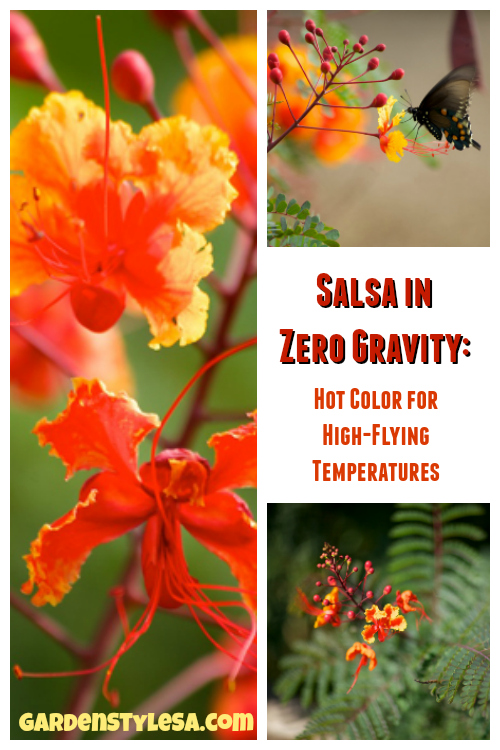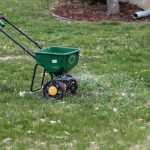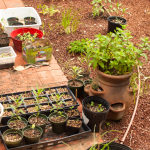Drought-hardy Pride of Barbados shrugs off dry weather and responds with flaming hot hues.
It happens every year around mid-September. Our landscapes are sad and haggard after a long summer of record-breaking heat. Too bad every San Antonian didn’t just plant pride of Barbados. We could’ve saved all that water for tubing (and having a blast) instead of dragging hoses around.
Pride of Barbados is so tough and puro San Antonio you can even find it in a few spots along the downtown highway medians — having received no water at all — paired with esperanzas and cenizos. Even on the hottest days of summer, it shrugs off heat and drought and offers up fantastic flowers to passing drivers in shades of pink, orange, red and yellow. The flowers float upward, blooming from bottom to top, like salsa spilled in zero gravity.

Though its bloom season is coming to an end this year, it can still be planted in autumn to give it time to get its roots established over winter.
Despite its knockout appearance, it’s pretty simple to grow if you’ve got a patch of scorching sun in your landscape. The biggest chore is putting on gloves to cut it back after the first freeze. The weak-wooded branches are armed with fuzzy reddish prickles that can eventually turn sharp, but with the plant dying back once a year, these rarely become an issue. The roots survive winter with no problem and return with a flush of fernlike leaflets every spring.
Pride of Barbados is a tropical shrub, probably native to the West Indies, but now so widely planted that its exact origins are obscure. Its many monikers include poinciana, red bird of paradise and peacock flower. Even the Latin species name pulcherrima is lyrical, meaning “the most beautiful.”
In some long warm winters, a few local specimens reach almost tree size, casting a bit of fire-tinted shade. Don’t be afraid to prune or lift the canopy to make room for chairs — beneath a poinciana is the perfect place to sit and watch clouds of butterflies and hummingbirds roll by.
Many a local gardener has noticed the bean pods and tried to grow Caesalpinia pulcherrima from seed. But if your thumb is black, don’t worry. This species is also widely available in nurseries if you just know what name to call it.
Pride of Barbados and other drought-hardy shrubs and perennials are regularly included in our WaterSaver Landscape Coupon.




